RECOIL OFFGRID Preparation Situational Awareness & Threat Perception
In This Article
We don’t need to extol the value of everyday preparedness — if you’re reading this article, you already know its importance. But being prepared without looking prepared is a much more daunting task, and requires a conscious decision to blend into the environment. It offers the ability to go about your daily routine without being noticed or drawing attention. Some call this the gray man principle, others call it simply maintaining normality. The element of surprise can be paramount when it comes to addressing threats or other dangerous situations you may encounter. Alternatively, blending in can also help reduce the likelihood of being a target in the first place. In any environment, threat perception is key.
One of the elements often discussed when referencing this philosophy is situational awareness — the ability to pay attention to your environment in a way that helps you decipher and analyze the things occurring around you. This is important in order to increase your chances of being able to appropriately respond to incidents. In a lot of ways, it’s the foundation for preparedness in general.
An important component of situational awareness is threat perception. Threat perception is our ability to evaluate the nature and degree of risk an individual, a group of people, or the environment itself may pose. When referencing people, our job is to evaluate whether a person is a perceived threat, real threat, or no threat at all. Correctly analyzing threats gives us the ability to react and present countermeasures as quickly as possible. Contrary to the super-power suggesting ideas that situational awareness typically drags around, the goal should always be to perceive things correctly, not obsess over each thing that could in some way be a threat.
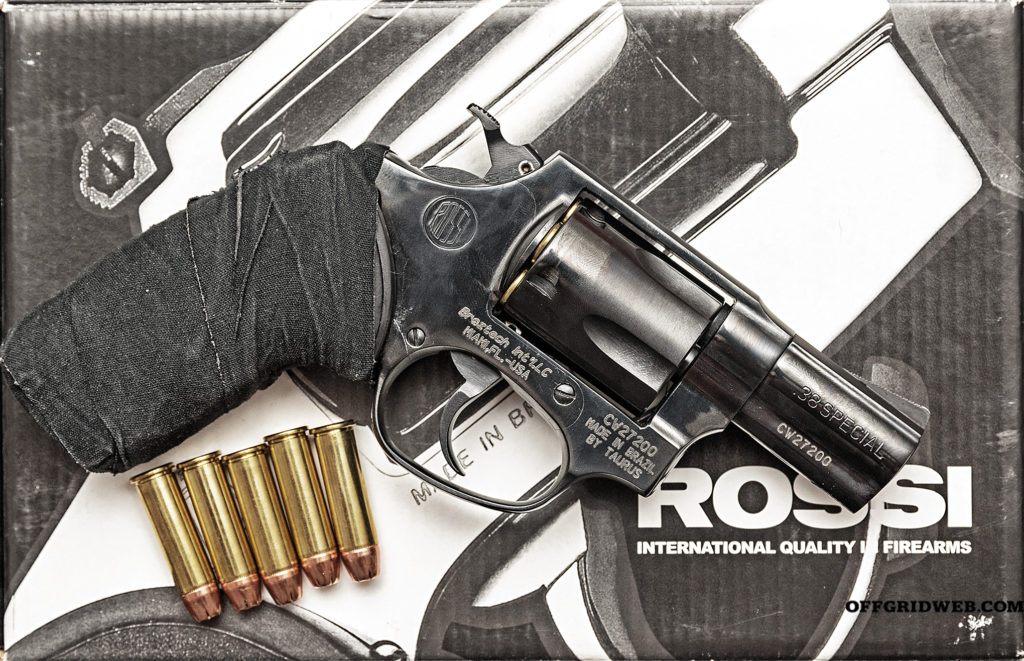
Above: Small revolvers, such as this inexpensive Rossi R351, can easily slip into a jacket pocket. They can also be fired repeatedly from that position.
There are many valid reasons someone in your vicinity might be carrying a weapon, just as you have valid reasons for carrying your own. However, it’s wise to be aware of anyone around you who might be armed. In some sense, this grounds Heinlein's idea that an “armed society is a polite society.” This information can be cross-referenced with the presence (or absence) of other warning signs, such as nervous or aggressive behavior, to indicate whether an armed individual might be about to use that weapon for nefarious purposes. No method of identifying a weapon is foolproof. Regardless of how proficient you become, you’ll never have a 100-percent success rate. Over time, you can get better and more competent at identifying who’s carrying a weapon; however, there are other factors you may not be able to gauge, such as legality and intent. A lot of people carry firearms and knives as part of their everyday carry and are perfectly legal in doing so.
Most of the indicators we’ll be discussing below are related to people who are illegally carrying, inexperienced in carrying, or are using improvised methods. Proper gear and training can and will negate many (if not all) of the cues mentioned below.
Let’s look at a few common indicators related to carrying weapons, more specifically handguns.
Garden-variety criminals typically don’t use holsters. Carrying a holster on the belt makes it hard to discard the weapon and holster in a speedy fashion. For instance, if a crime is committed and the gun is tossed, having to deal with a holster only slows down the process. Improvised carry of handguns in the waistband or pocket typically allows for quick disposal with little effort.
To identify a threat, look for other methods and modes of carrying that may seem unorthodox in regards to normal concealment methods. Primary areas to scan are the front of the waistband, small of the back, and pockets.
As an early indicator of threat perception, look for bulges in clothing, or bulky layers which may be used for concealment. Weapons often print underneath outer garments, and bulkier clothing is a simple way to mitigate that. Sometimes printing is extremely obvious; other times it’s harder to identify. Printing tends to be more pronounced when the subject is twisting, turning, or bending over. Basically, any activity causing a subject's clothing to pull tight against their body can be a great time to identify a weapon, especially along the waistline.
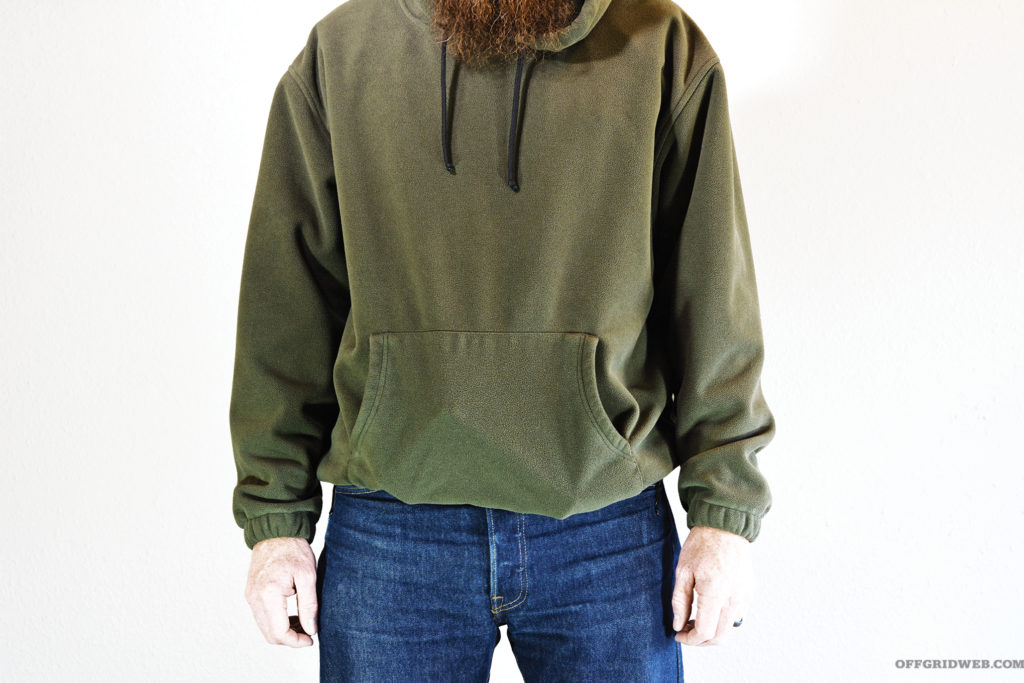
Above: Subject is carrying handgun in hoodie pocket, which is very visible through the fabric.
Is their clothing sagging on one side? If so, what could be weighing it down? This can be very pronounced when the subject is carrying in the pocket of a jacket or in the front pocket of a hoodie. But don’t jump to conclusions — other personal items like a large smartphone will do this as well.
In addition, if someone avoids taking off layers of clothing when indoors or in situations where they normally would, it could be a clue. Extra layers and bulk help conceal weapons, but only when it makes sense. The environment, weather, and social setting all have an influence on how people dress. Use these factors to establish what’s normal and look for anomalies.
This could be something like extra layers when the weather is too hot to warrant wearing them. When I was working at my old agency, we had a requirement to be covered up while in public. All of our gear, including our firearm, had to be concealed during the course of our day. This didn’t apply during operations or enforcement action, but it was standard for normal business. This meant a lot of times you’d see folks wearing a 5.11 (fishing/safari-style) vest, fleece vest, or another cover garment of sorts. No matter what you do, none of those looks work well or make sense during the month of August in Texas. It’s pretty much a dead giveaway that someone has a concealed weapon.
Determine the strong side of the person you’re observing in order to make an assumption as to which side they may be carrying on. We’re not talking about absolutes here, so do a quick assessment to make your determination. Some quick things to look for could be which hand they write with, shake hands with, point or gesture with, or open doors with. You can also look to see if they're wearing a watch, which is typically worn on the support side.
Another indicator is the fact they may not swing their strong arm as much, preferring to keep it closer to the concealed weapon in an attempt to hold it or keep it in place. These are all in addition to the fact most folks are right-handed, which puts the odds in your favor.
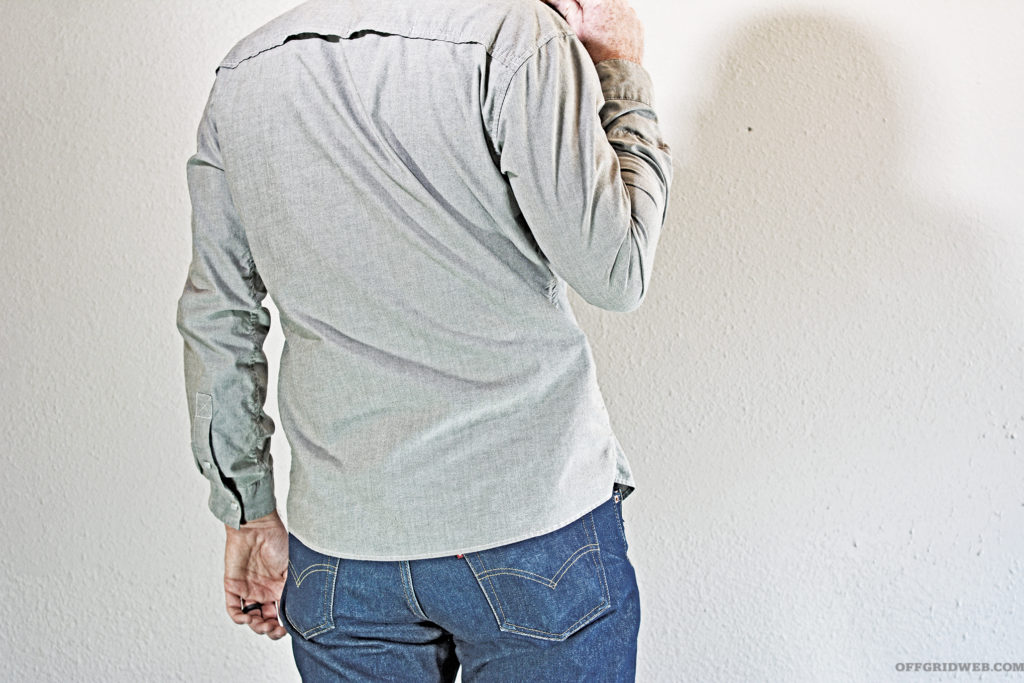

Above: Carrying IWB on his right side, the subject is slightly twisting and showing the bottom of the weapon’s grip while on the phone.
Once you determine the dominant hand, you’ll have a high degree of certainty that this will be the hand used to initiate an event. Even when carried near the centerline of the body, such as in appendix or small-of-the-back positions, weapons will typically be oriented toward the strong side.
As the saying goes, watch the hands. Look for folks who are periodically touching or trying to physically check on the condition or location of their weapon. This may be happening consciously or subconsciously, and is common for illegal carry as well as legal carry of concealed weapons. However, it’s more prominent for those who are illegally carrying a weapon due to the less-than-ideal carry methods that are often used. If someone is using a inside-the-waistband technique, the simple act of walking is enough to cause movement with the weapon, which will require frequent adjustment. An adjustment requires more effort than a security check and may provide a better opportunity for observation.
When it comes to hiding things, people will naturally try to use their body as a shield between the item they’re concealing and a casual observer. When this happens, it can sometimes create odd positioning of their body in an attempt to move the item out of line of sight. This can also be observed when someone engages in physical contact with another person. Whether it be unwilling contact due to a crowded environment or willing contact in the form of a hug, look for the person to awkwardly blade their body to shield their weapon or to prevent it from making physical contact with the other person.

Above: Inside-the-waistband (IWB) carry on right side of subject. Rear of slide and backstrap of grip are catching the shirt fabric despite the subject trying to conceal with his forearm.
If someone is carrying using a less-than-ideal method, they’ll typically be forced to grasp or hold the weapon during physical activity. Running, jogging, or even a brisk walk could be enough to displace a handgun stuck inside the waistband. This is also true if their preferred concealment method is inside the pocket. Look for signs of this at the onset of someone doing something physical. When the physical activity is over, look for the grasp to be released followed up by a quick adjustment.
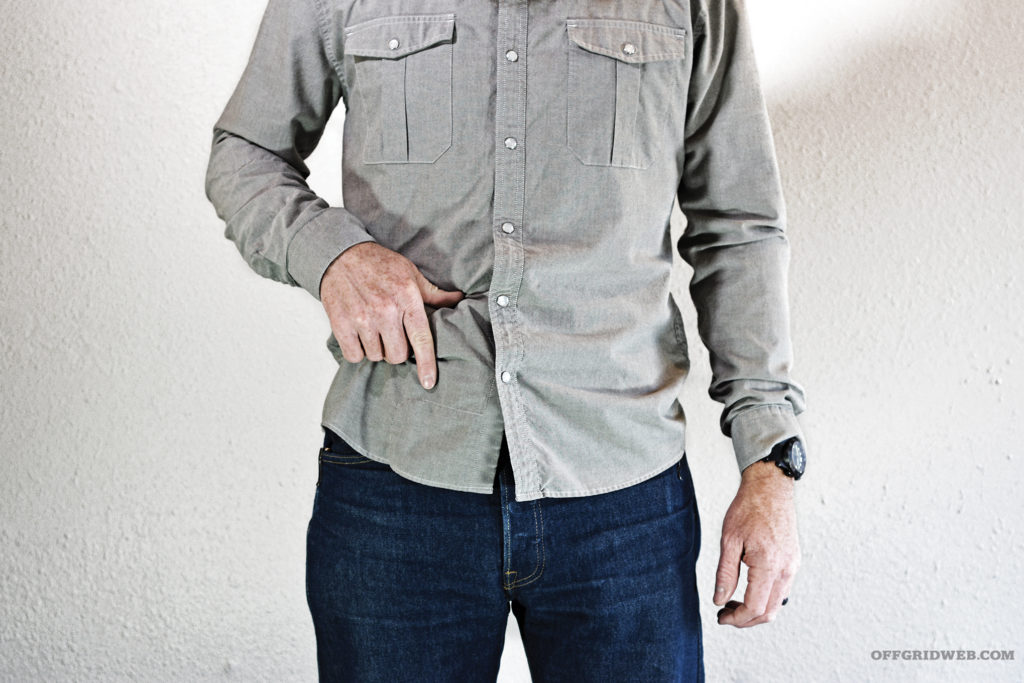
Above: Subject is adjusting the gun, as the lack of holster has caused the weapon to start falling too far into his pants.
Less common, but still possible, is the carry of a weapon inside a boot or shoe, or even an ankle holster. Either way, carrying something inside the leg of your pants or inside your footwear will often cause unnatural movement. The weight and discomfort alone are typically enough to give off visible clues related to a disrupted or shorter stride.
As simple as it may seem, what someone says may be as important as what they do. If you experience or witness someone displaying pre-assault indicators combined with very specific wording that indicates violence or the intended use of a weapon, you should treat it as such. It’s not uncommon for someone to threaten the use of a weapon prior to the actual event.
When you start to notice someone displaying these characteristics, it increases the odds they may be carrying a weapon of some sort. Is it foolproof? No. Is it automatically indicative of an impending gunfight? Certainly not. This is just one piece of the information-gathering process. If an individual displays several of these signs and also appears visibly agitated or uncomfortable, your situational awareness should be heightened, and you should seriously consider your options for escape or response if the threat escalates.
As a reminder, a lot of the same mannerisms listed above are often displayed by folks legally carrying concealed weapons, which may include you. It’s important to be aware of how we may be projecting our lawful carry, and to avoid giving up any advantage we may have. If we know what to look for when trying to identify a threat, we can avoid giving off those same cues when we’re legally carrying. It’s also dangerously naïve to assume the bad guys aren’t on the lookout for these behaviors — if anything, they may be more observant than we are, since it’s a core component of their daily survival. Experienced predators often develop a keen sense of which victims will be easy prey, and which victims might fight back.
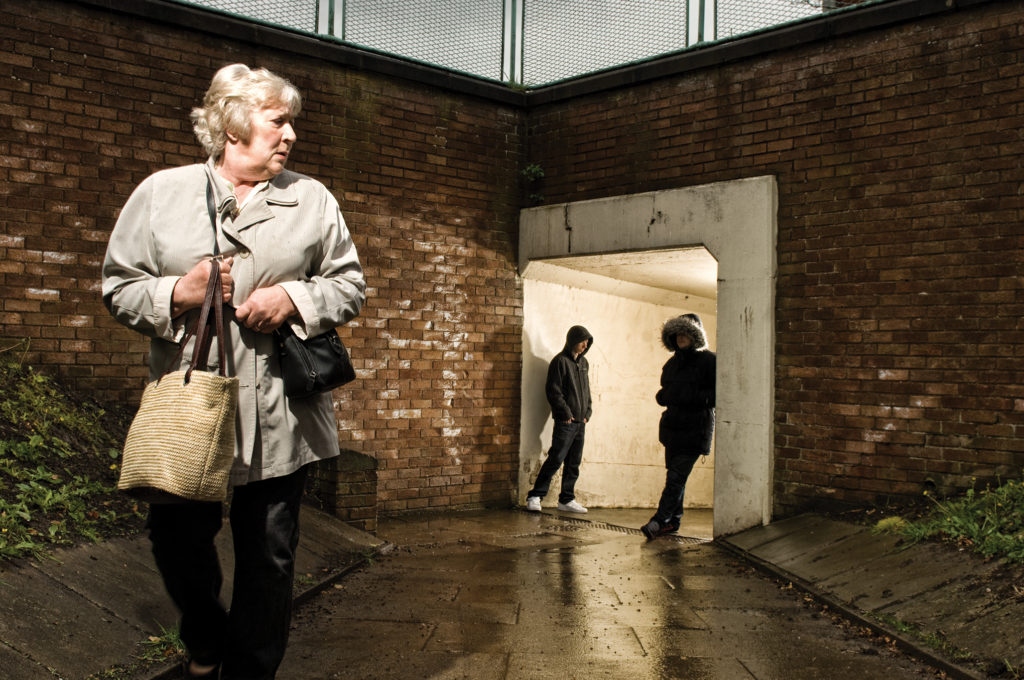
There will always be threats and serious situations outside of our control. However, we should continually seek to improve the things we can control. Threat perception is one of the many things we can and should work on. Getting better at threat perception allows us to reduce the amount of time from action to reaction. Alternatively, it also gives us the ability to effectively mount a countermeasure that’s unexpected by a bad guy. It’s hard to respond to a threat if you’re blindsided by it. As you get better at spotting weapons — and hopefully better at concealing your own — assume everyone is armed, and prepare accordingly.
Cody Martin is the owner of Risk Strategy Group, a company focused on physical security and risk mitigation, and the founder of Option Gray. Cody spent more than 11 years in federal law enforcement, including time working in executive protection, narcotics, violent crime, and explosives. Cody was also an instructor and threat management coordinator for firearms, defensive tactics, and officer survival.
For professional Inquiries: riskstrategygroup.com
For more of his writing: optiongray.com
 STAY SAFE: Download a Free copy of the OFFGRID Outbreak Issue
STAY SAFE: Download a Free copy of the OFFGRID Outbreak Issue
No Comments